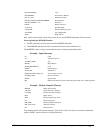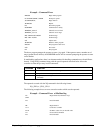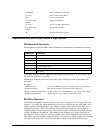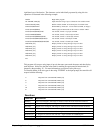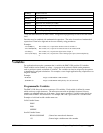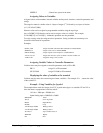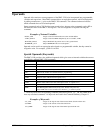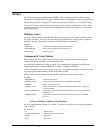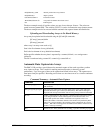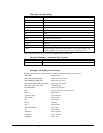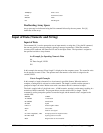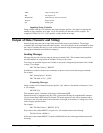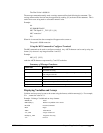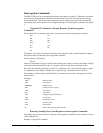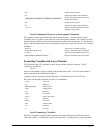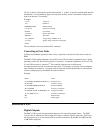
USER MANUAL Chapter 7 Application Programming • 131
POS[COUNT]=_TPX Record position into array element
POS[COUNT]= Report position
COUNT=COUNT+1 Increment counter
JP #LOOP,COUNT<10 Loop until 10 elements have been stored
EN End Program
The above example records 10 position values at a rate of one value per 10 msec. The values are
stored in an array named POS. The variable, COUNT, is used to increment the array element counter.
The above example can also be executed with the automatic data capture feature described below.
Uploading and Downloading Arrays to On Board Memory
Arrays may be uploaded and downloaded using the QU and QD commands.
QU array[],start,end,delim
QD array[],start,end
where array is an array name such as A[].
Start is the first element of array (default=0)
End is the last element of array (default=last element)
Delim specifies whether the array data is seperated by a comma (delim=1) or a carriage return
(delim=0).
The file is terminated using <control>Z, <control>Q, <control>D or \.
Automatic Data Capture into Arrays
The DMC-13X8 provides a special feature for automatic capture of data such as position, position
error, inputs or torque. This is useful for teaching motion trajectories or observing system
performance. Up to four types of data can be captured and stored in four arrays. The capture rate or
time interval may be specified. Recording can be done as a one-time event or as a circular continuous
recording.
Command Summary - Automatic Data Capture
COMMAND DESCRIPTION
RA n[],m[],o[],p[]
Selects up to four arrays for data capture. The arrays must be defined with the
DM command.
RD type1,type2,type3,type4
Selects the type of data to be recorded, where type1, type2, type3, and type 4
represent the various types of data (see table below). The order of data type is
important and corresponds with the order of n,m,o,p arrays in the RA command.
RC n,m
The RC command begins data collection. Sets data capture time interval where
n is an integer between 1 and 8 and designates 2
n
msec between data. m is
optional and specifies the number of elements to be captured. If m is not
defined, the number of elements defaults to the smallest array defined by DM.
When m is a negative number, the recording is done continuoudly in a circular
manner. _RD is the recording pointer and indicates the address of the next array
element. n=0 stops recording.
RC? Returns a 0 or 1 where, 0 denotes not recording, 1 specifies recording in progress



